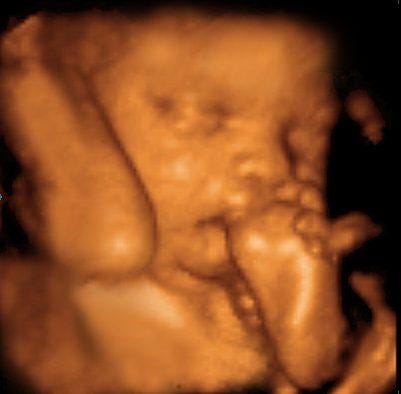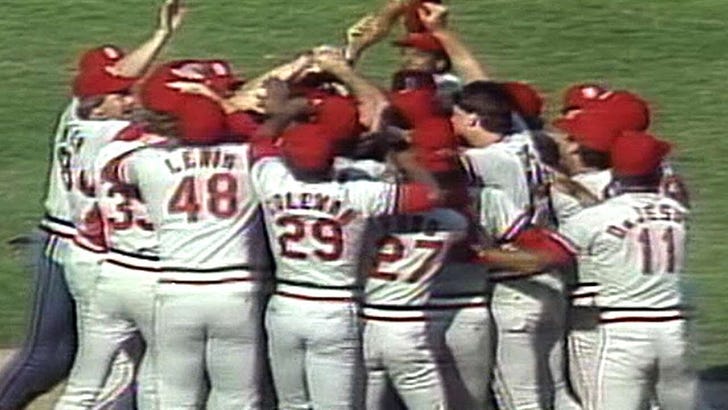I’ll build off Joe Sheehan’s breakdown of Noah Syndegaard’s injury today. If you’re not already subscribed to Sheehan’s newsletter, do so.
Sheehan’s analysis is, for the most part, dead on. Joe and I tend to look at things similarly, though from different angles. He’s the baseball detail man; I’m focused on the injury side of things. I’ll focus on two areas where we differ or at least come at things differently.
First, Joe says this:
“There may not be a good way to solve this problem. I’m of the opinion that until we can actually measure the strength and condition of a pitcher’s UCL, we’re just guessing. Some of them will snap quickly; some will last a while. A couple of guys in each generation will be Nolan Ryan or Justin Verlander. We can't know which ones.”
I’ll leave aside the Nolan Ryan history and focus on the ‘actual measurement’ part. The fact is, we can, right now. It’s not some future technology or even that expensive. It’s ultrasound and I’ll bet a majority of you have used it in some way.
The most well-known application is in-utero, that grainy picture of a baby. More advanced “3D” units cross the uncanny valley for me, but you get the idea from the pics below that we can see a lot.


This same kind of quality is available for muscles, tendons, and ligaments. The gold standard for almost all soft tissue injuries is the MRI. They’re available, but expensive and not available at the sideline or even in-stadium for reasons of cost, size, and usage. Let’s compare what we get from an MRI and a standard, available ultrasound. I’m using the PCL (posterior collateral ligament) of the knee because I could find better images of that available:
MRI

Ultrasound

As you can see, the ultrasound is as clear, if not as definitive. It’s also available right now, on the sidelines or in the dugout. There’s no reason that a pitcher couldn’t have his elbow checked between every inning, though it would be a bit of overkill to do so. (It would be a nice study however.)
Advanced units can do even more. While not as portable yet, these can see motion and get detail that goes down to the cellular level. Again, this is technology that is available right now. I’ve had discussions with MLB physicians about their use of this as far back as 2012.

Expensive? I know teams don’t like to spend money on anything, but for cripe’s sake, these kind of units are available on Amazon. There’s even a unit designed to hook up to an iPhone. Yes, there’s an app for that. They’re widely used in soccer, both Euro where they’ve been standard at all levels for a decade, and even in the US, where the MLS tends to follow Euro teams more than their American pro counterparts.
If the idea is that we have to save pitchers from both the workload and the acute loading of the high effort fastball, then the ultrasound viewing of the ligament itself is an absolute no-brainer. The cost is less than one Tommy John surgery, let alone the lost value of a Chris Sale or Noah Syndergaard. So tell me, baseball owners, why don’t you have one?
Second, Joe cites me on Syndegaard’s return:
“I wouldn’t expect anything like a full season from him in 2021, although Will Carroll suggests Thor could be back in 12 months.”
The standard return time is something that really sticks in my craw. The return time is, as best I can tell, based on absolutely nothing. When people quote 14-18 months, the long end of that is based largely on Tommy John himself. While the surgery hasn’t changed significantly in 30-something years, we should have gotten better at the rehab.
As well, John had a serious complication during that initial operation. His ulnar nerve was compressed, necessitating a second surgery in the midst of his rehab. That’s why it went 18 months rather than something shorter.
On the 14 month number, it’s similarly flawed. While the 14 or 15 month mark is cited as the average return for an MLB pitcher, there are so many factors that go into that, most notably the calendar. A pitcher who’s ready to go in February - during spring training - isn’t counted as “back” until Opening Day. This is necessitated as outsiders - we don’t know the day to day grind or when a pitcher is actually ready, but the data does exist and MLB’s studies have failed to use it.
Why? Because it doesn’t mean much to them. Tommy John has a great success rate and so they’re happy to shrug their shoulders in terms of prevention and rehab because it’s a known. It’s a cost, not a loss, in business terms.
We have seen pitchers come back in significantly less time. There have been several MLB pitchers that have come back in less than a year, but at the college level, where the clock is really ticking, the twelve month mark is the norm rather than the exception. I’ve long believed that 12 months should be the long end and with objectively measured rehab protocols, we could drop it down significantly.
Add in the possible increased use of InternalBrace and the time to return could be dropped significantly, to as little as six months or less. There’s a lot more study and work to be done, so this is far from overnight in terms of changing how this is done.
(By the way, while everyone is focused on Tua Tagovailoa’s hip fracture, he also has two reconstructed ankles that were done with InternalBrace techniques known as ‘tightrope.’ The NFL is very comfortable with this surgical technique, so why isn’t MLB?)
In researching this, I discovered that the quickest comeback was not Zach Duke, who came back in 10 months from his surgery. Instead, it’s Ken Dayley, who had the surgery in 1986 with Dr. Frank Jobe. Given that time frame, including the likely rehab protocols, I believe this would have been almost completely the same setup that John himself would have had. Dayley came back in just seven months, which had it been done by John, could be the milestone we use today.
Just look at Dayley’s B-Ref page and I’ll defy you to find where he had the surgery. Answer? Just after the ’86 season and was back in late May of ’87, per Jon Roegele’s database.
Dayley’s not a one-off either. John Tudor also came back quickly, just a few years after Dayley. He only pitched one more season, but he was successful. I do have some questions about his mid-season return, but I do remember Tudor’s arm nearly exploding under a heavy workload in the famous 1988 playoffs.
So yes, I’ll say that Syndegaard could be back in 12 months. It’s more likely to be a bit longer, but I will say that there’s no medical reason that it should be, for him or for any other pitchers that need their elbows reconstructed.




